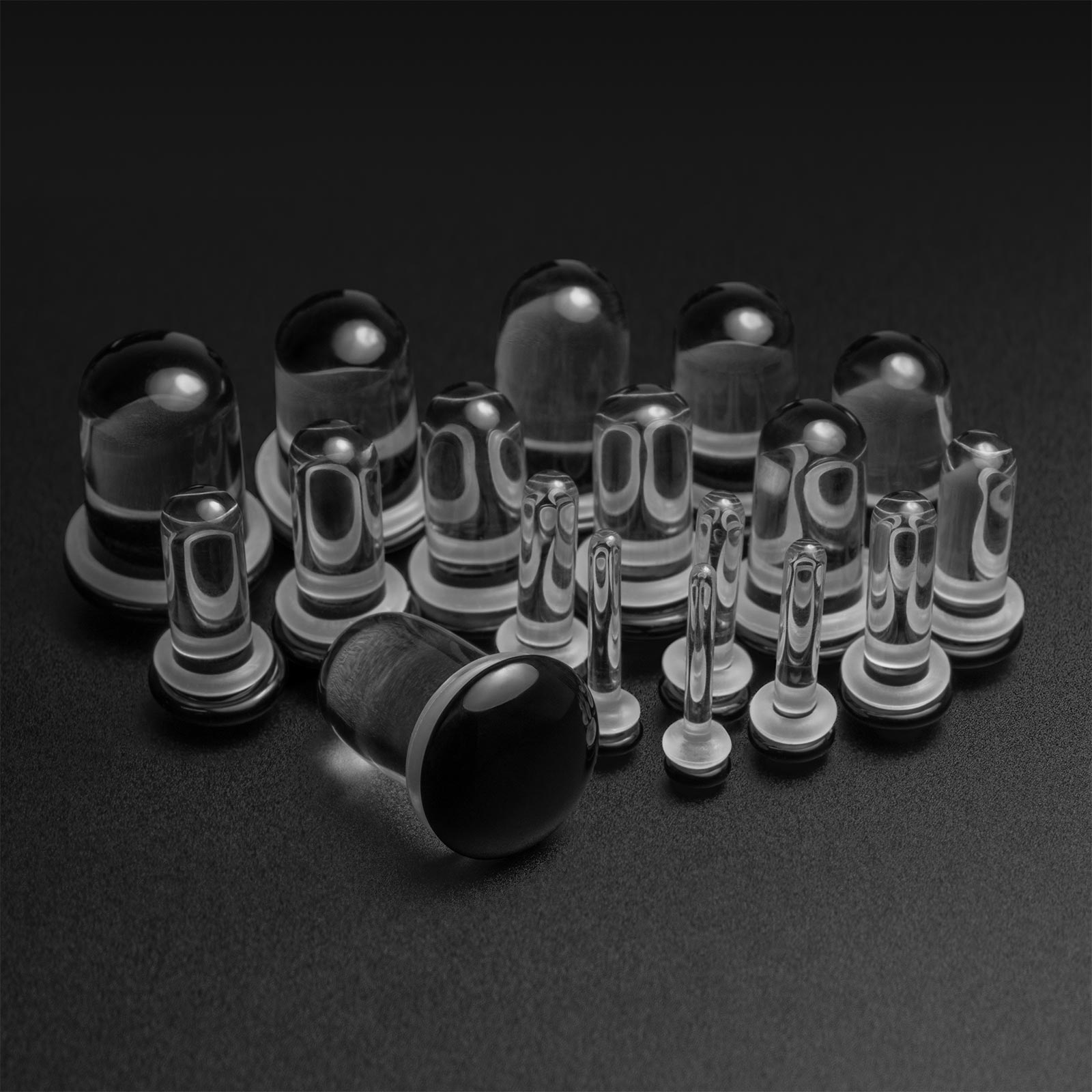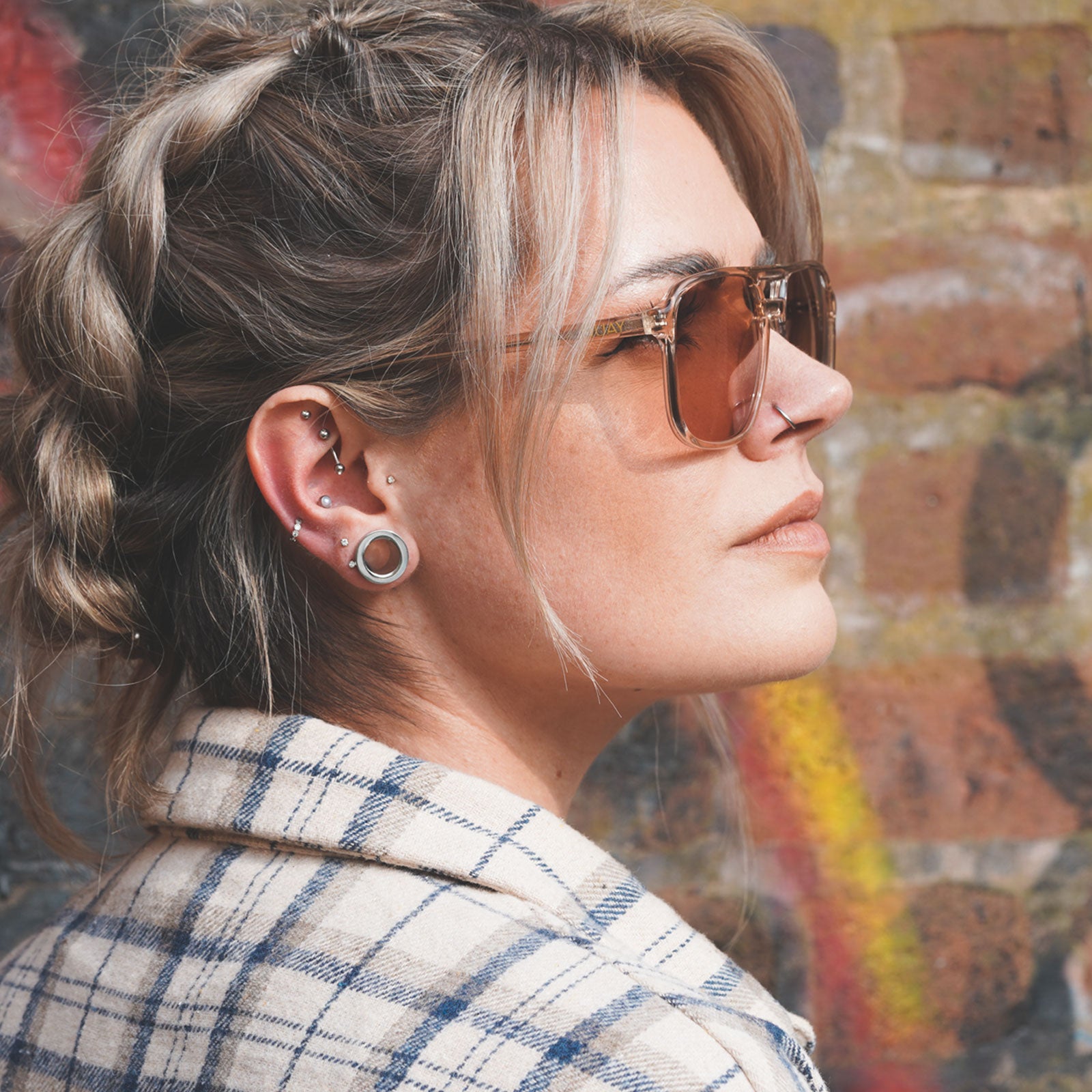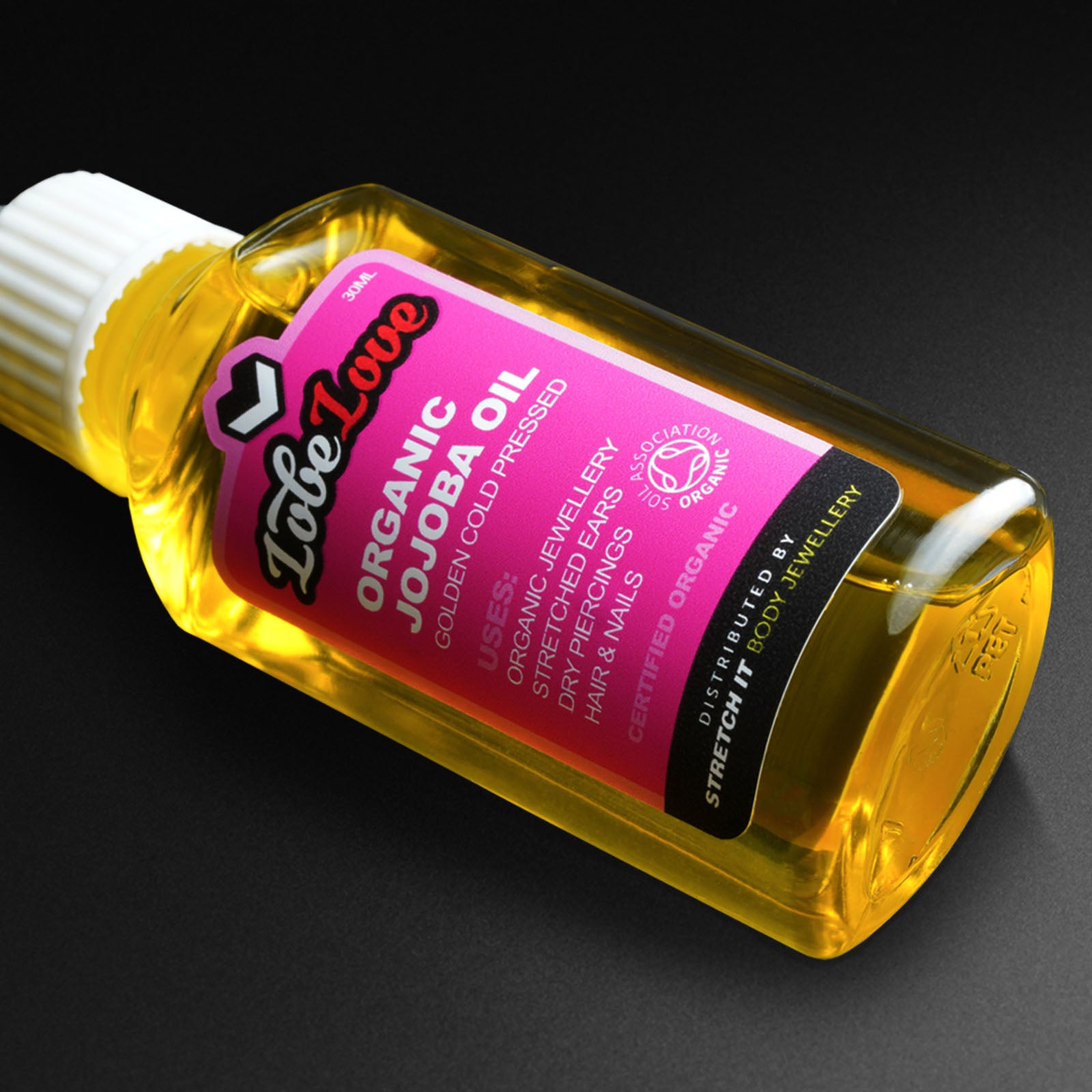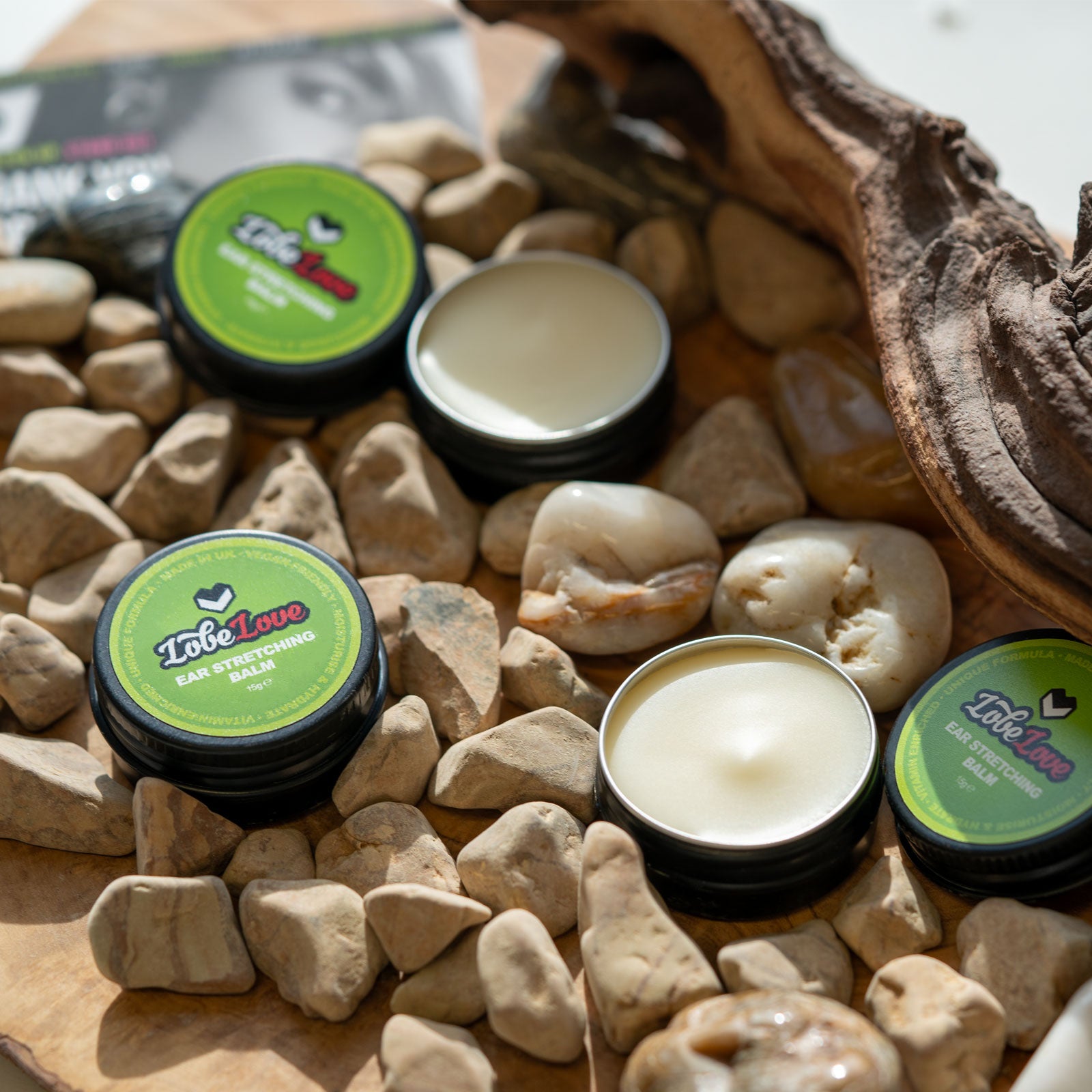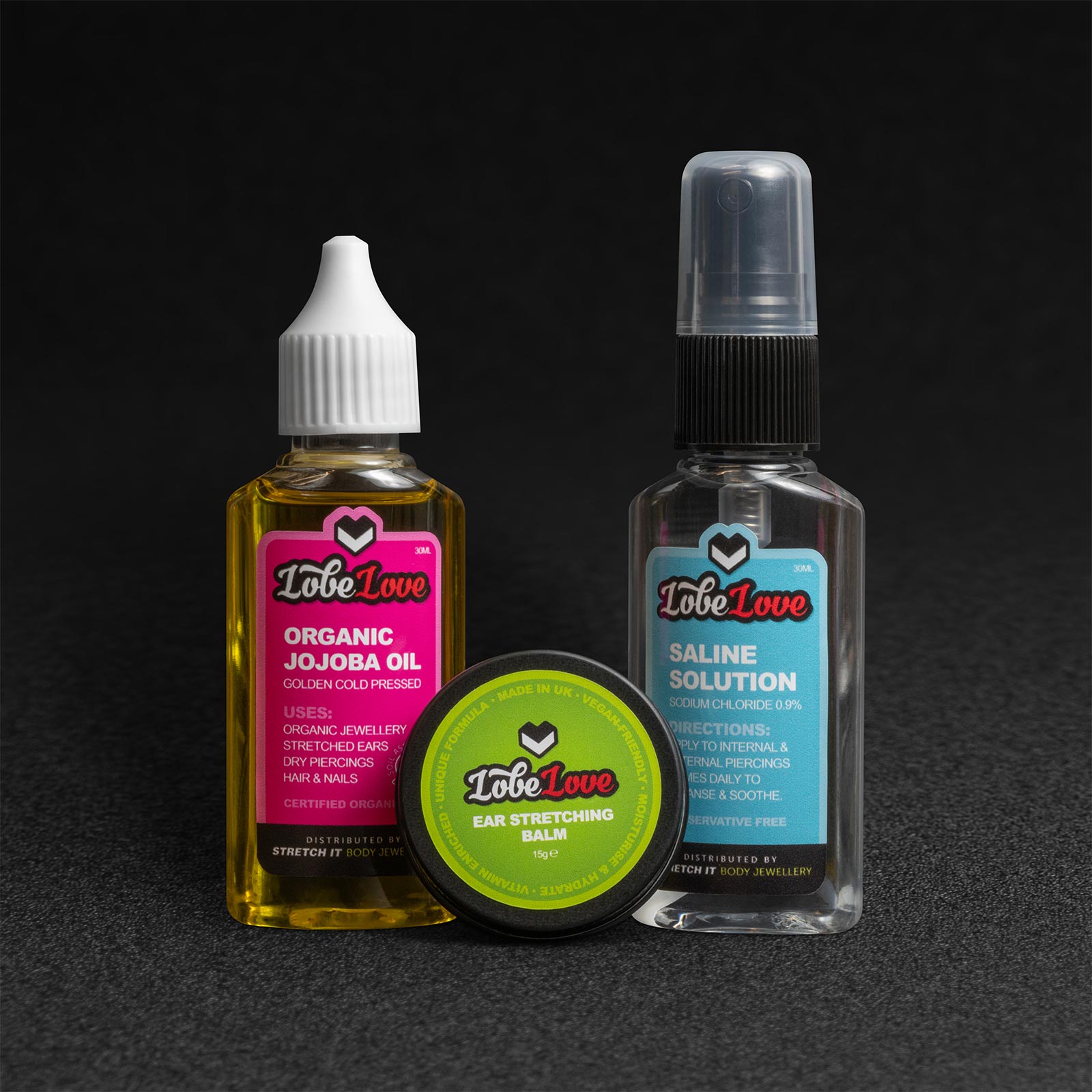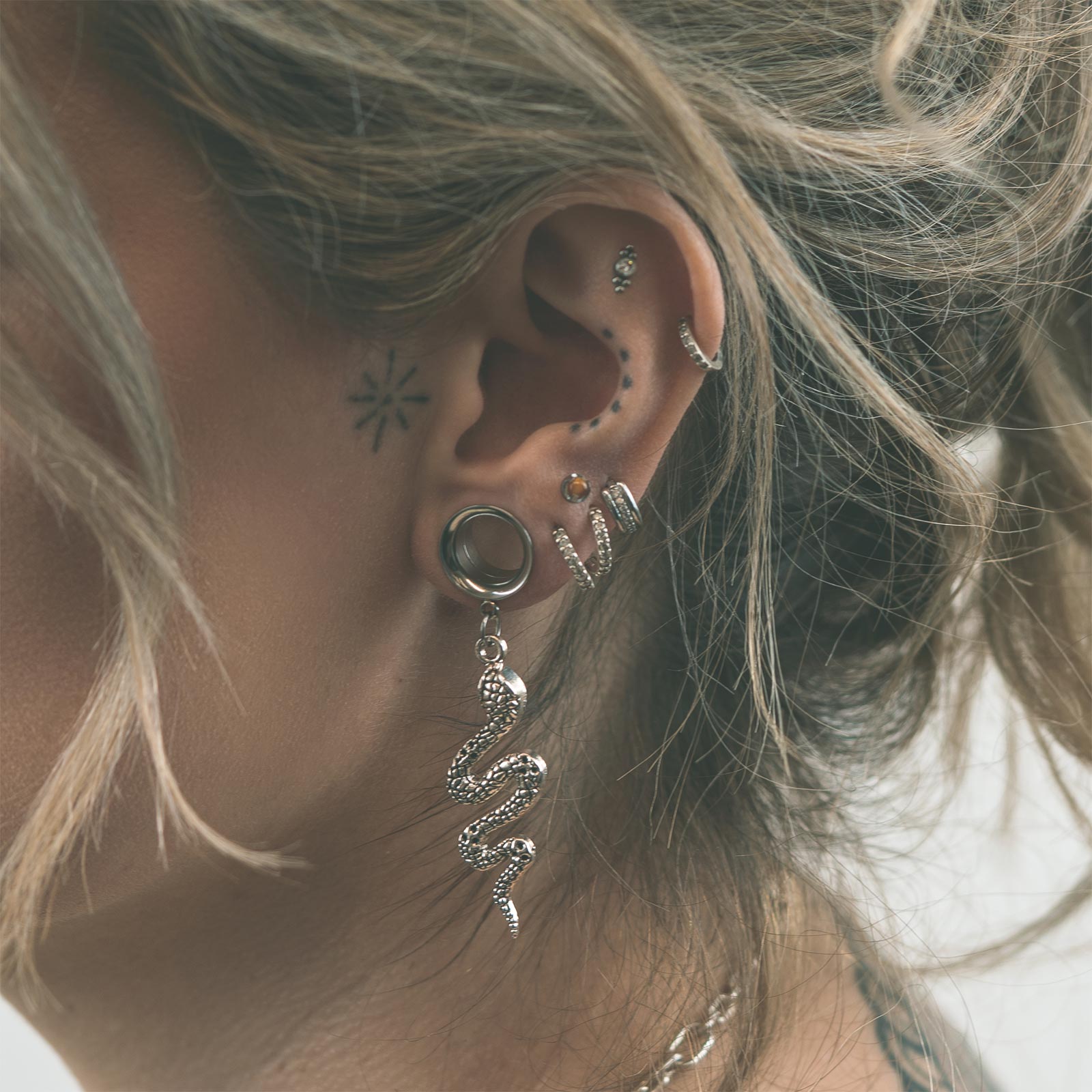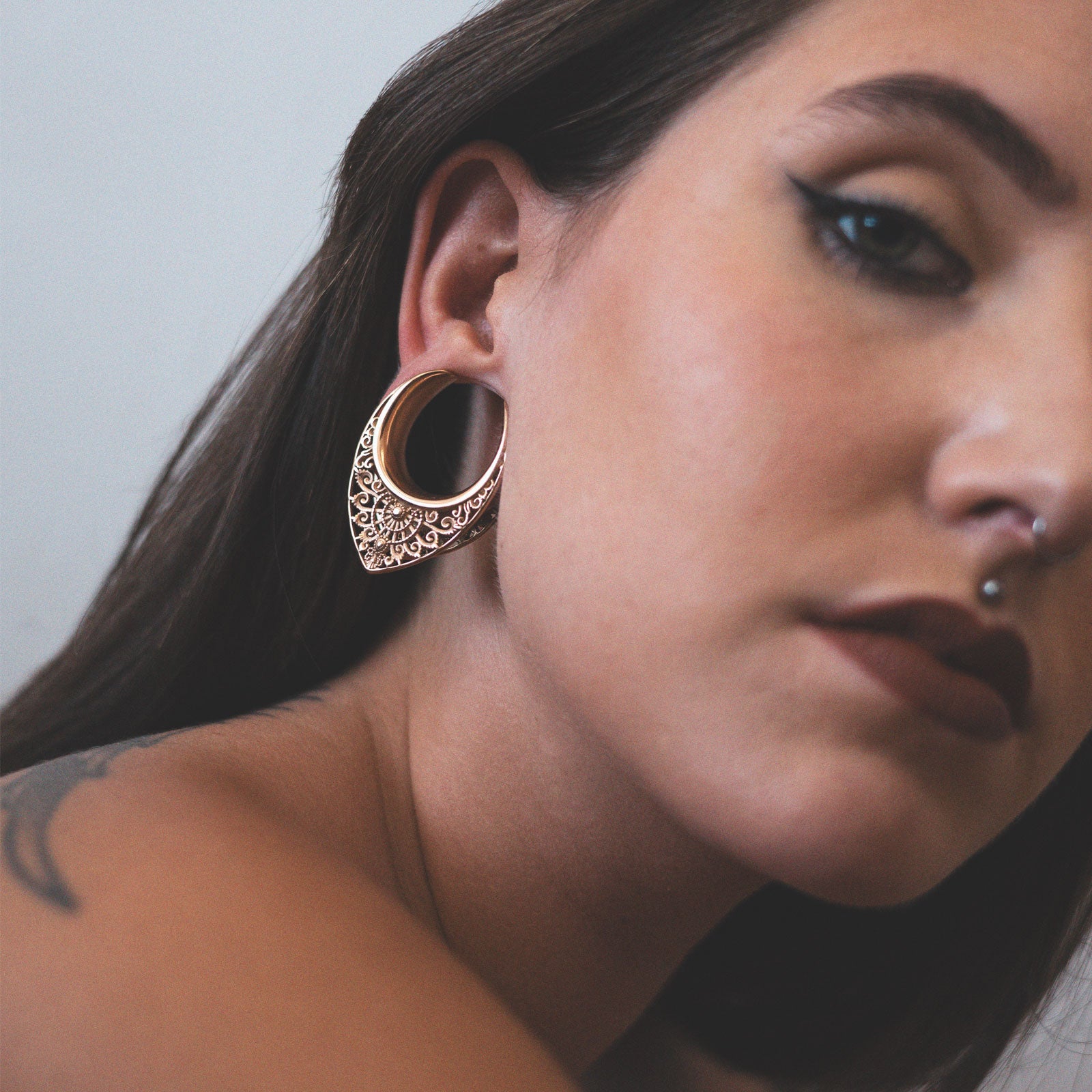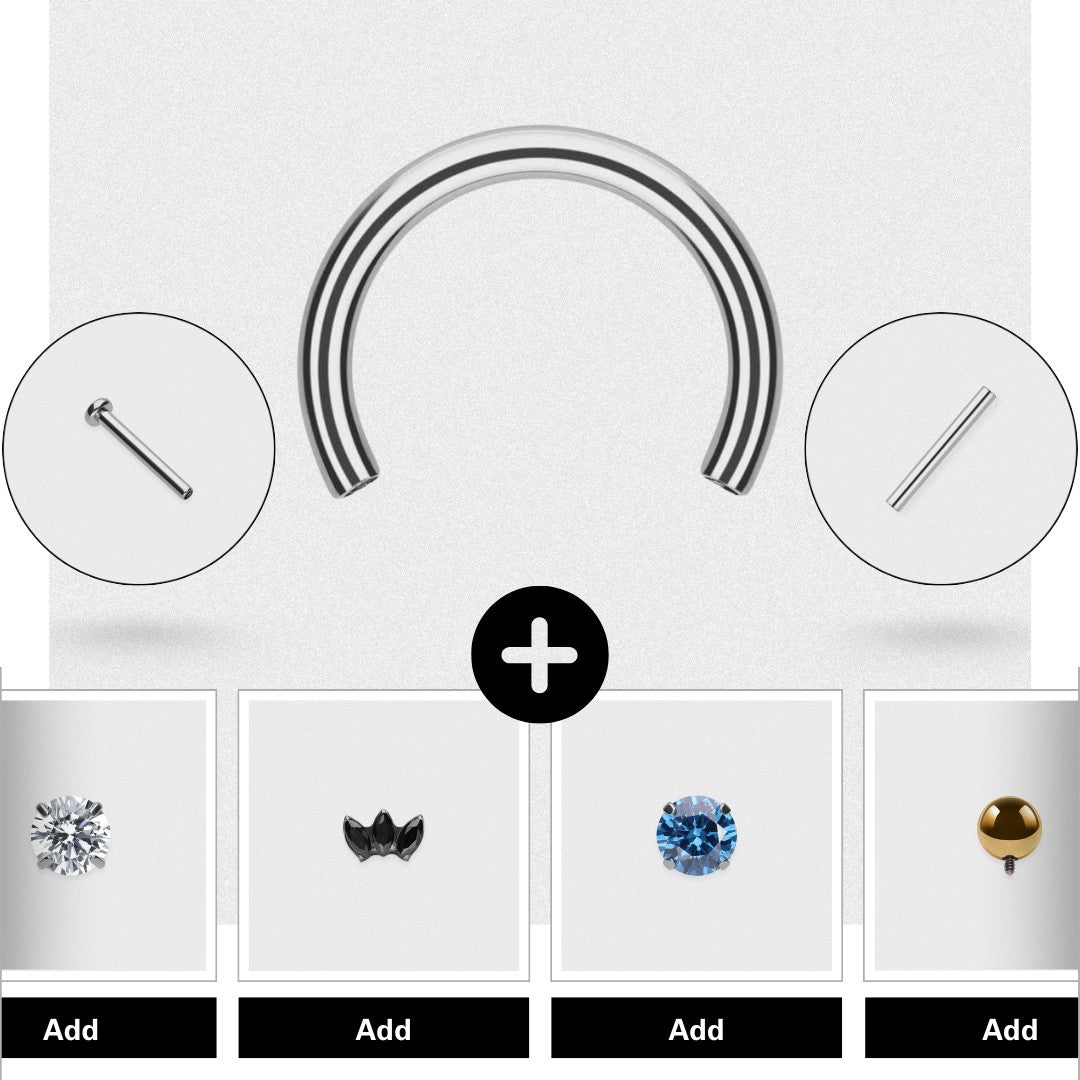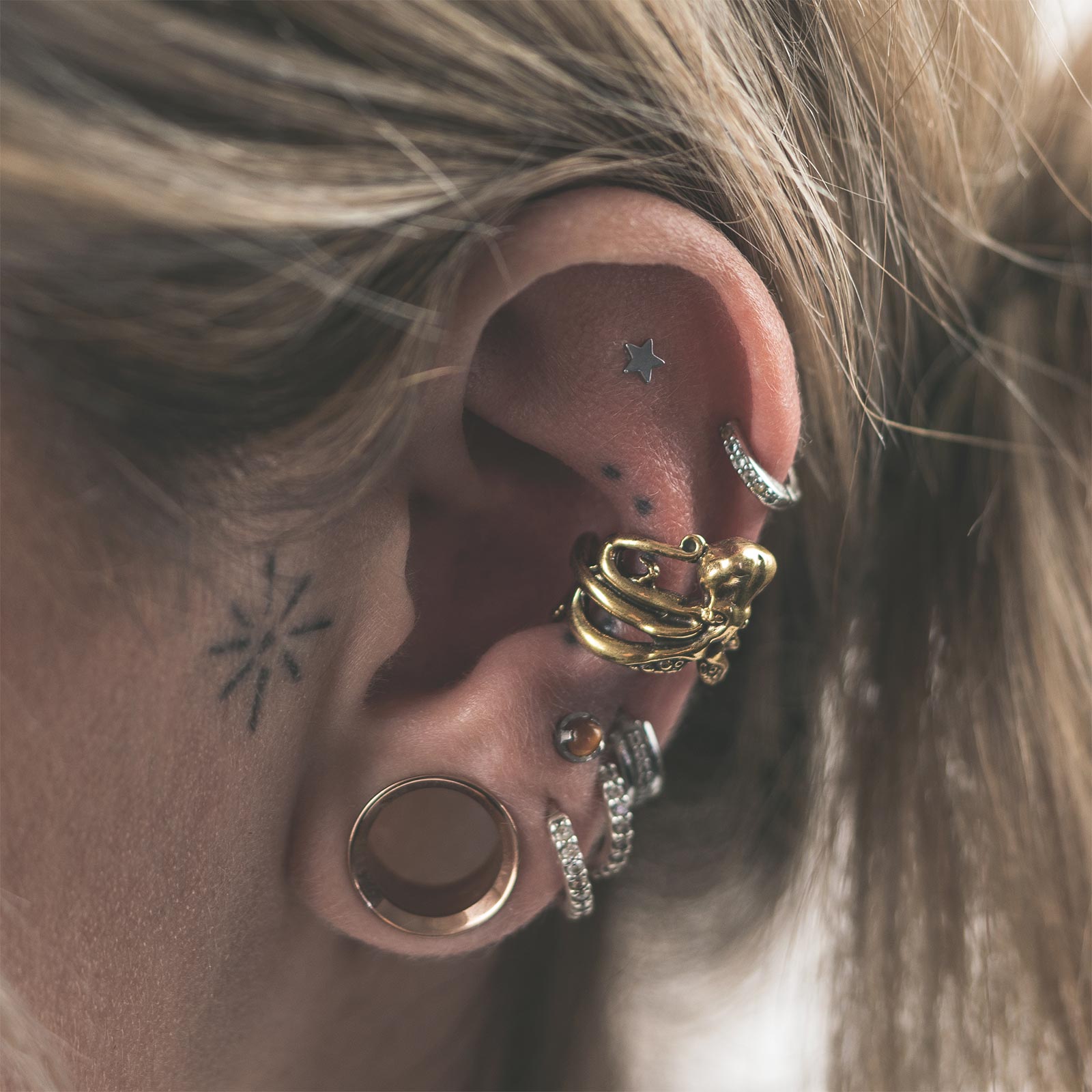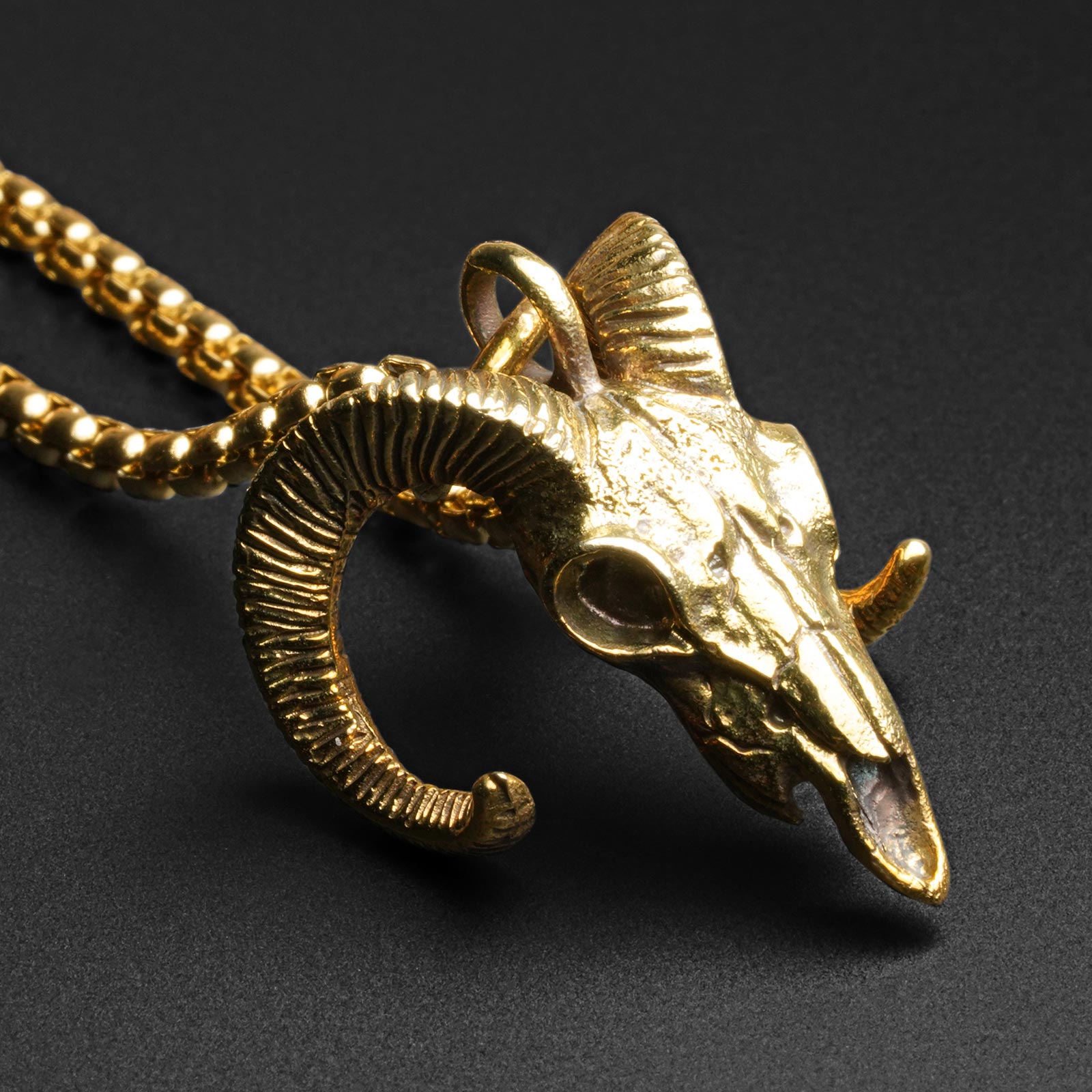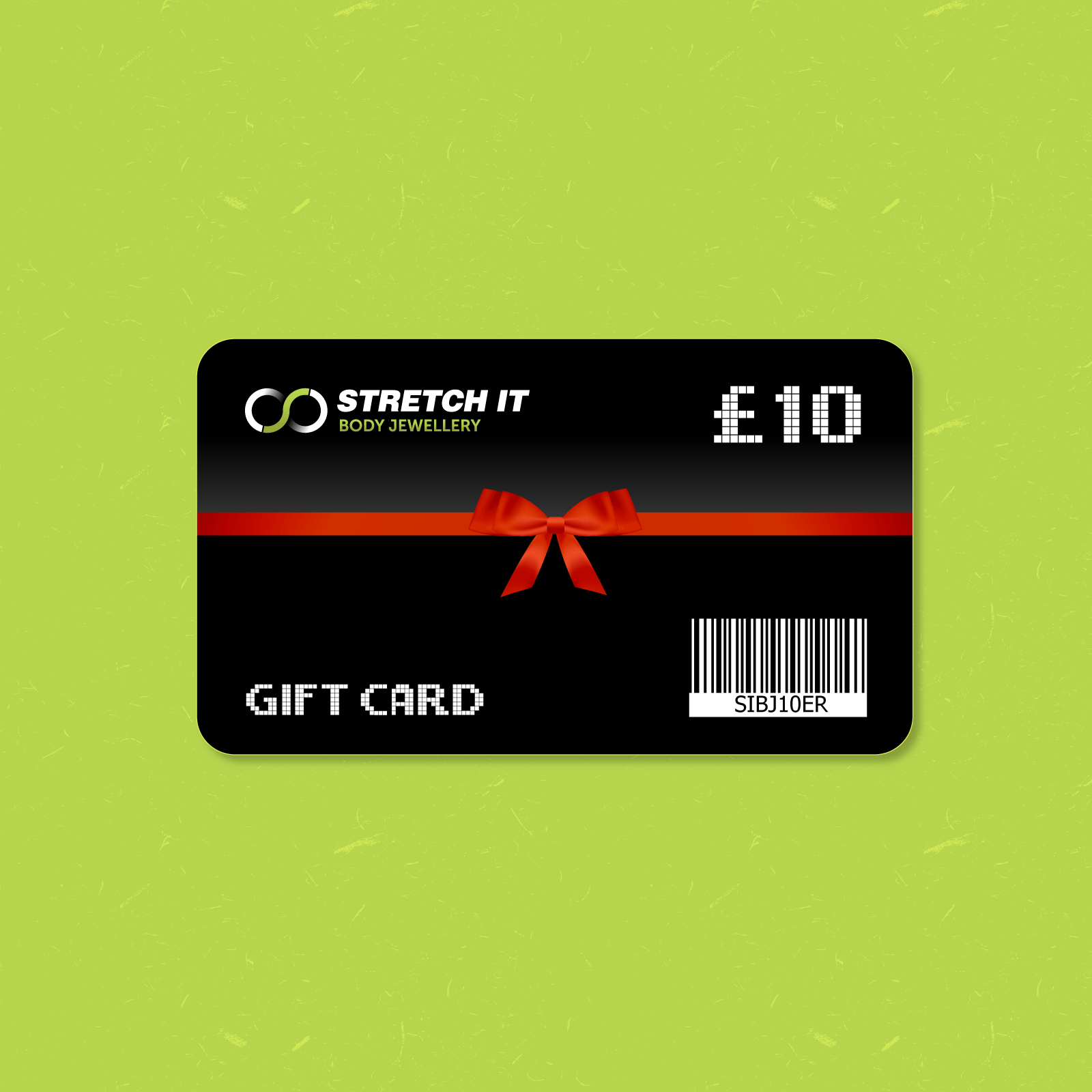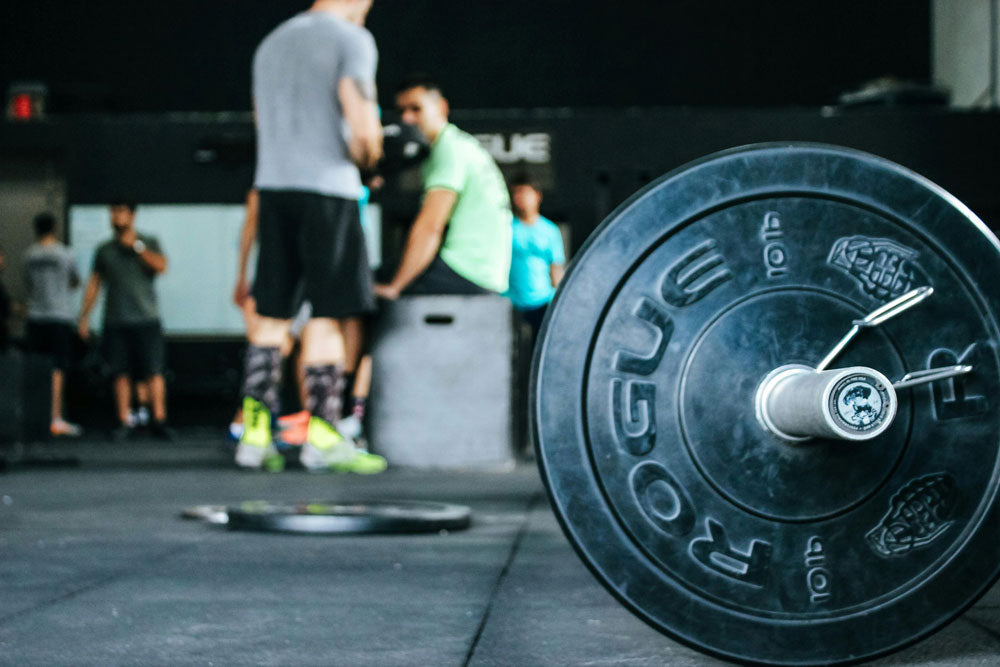"Dermal anchors shine in areas where surface piercings fall short, especially in body parts like the chest, neck, and wrists, where surplus skin is minimal."
Let's talk dermal anchors, or single-point piercings as they’re also called. You might have seen these mesmerising little gems nestled under the skin, giving off an air of mystique and edginess. That, friends, is a microdermal implant – another name for the same thing – which is inserted in your body using a totally alternative process.
Traditional piercings go in at one side and come out of the other. Comparatively, dermal anchors don’t follow the rules of the entry and exit points of run-of-the-mill piercings.
In fact, you could say single-point piercings are the rebels of the piercing world. They unquestionably offer a unique canvas for self-expression.
This article is a detailed roadmap to dermal anchors, from the intricate procedure to the crucial aftercare. So, you've come to the right place if you're ready to explore the depths of dermal modification. Anchors away!
Discussed In This Post
What Are Dermal Anchors?
This tiny marvel of modern body mod is a single-point piercing.
It’s achieved with a small, flat base, or anchor as it’s known, implanted into the dermis layer of your skin. This anchor nuzzles securely just beneath the surface and serves as a miniature platform. It’s typically a few millimetres in size and designed to provide a stable foundation for your dermal jewellery.
The magic happens when you attach your chosen dermal top to the base. There are loads of styles to choose from. But the awesome result is always the same - a stunning illusion of a jewel, shape or symbol floating on your skin.
The microdermal implant process calls for both precision and artistry. In fact, it’s a testament to how far piercing techniques have come, and we’ll go through it in depth shortly.
As you’d expect, the materials used are crucially important. Implant grade titanium is a popular choice for its many and varied qualities, which include:
- Biocompatibility
- Durability
- Minimises the risk of allergic reactions
- Ensuring long-lasting wear
As you can see, there are clear differences between dermal piercing vs surface piercing.
Dermal Anchors vs. Surface Piercings
It’s handy to compare and contrast the two piercing methods, plus the varying risks of dermal piercings and their surface piercing siblings:
Feature |
Dermal Anchor |
Surface Piercing |
| Insertion | Single-point implant with the base inserted into the dermis | Entry and exit points with a surface bar inserted |
| Movement Risk | Lower when properly placed and less prone to migration | Higher, more prone to migration and rejection |
| Rejection Rate | Moderate depending on placement and dermal piercing aftercare | Higher, more susceptible to tension and movement |
| Jewellery Options | Interchangeable tops (discs, gems, spikes, etc) | Surface bars with decorative ends |
| Placement Versatility | High, can be placed on almost any flat surface | Limited, requires areas with sufficient skin fold |
| Healing Time | 6-12 weeks initially, up to 6 months full anchor piercing healing time | 3-6 months, although often longer due to tension |
| Scarring | Minimal, small dermal anchor scars at entry point | More noticeable due to scars at entry and exit points |
Surprisingly, dermal anchors shine in areas where surface piercings fall short, especially in body parts like the chest, neck, and wrists, where surplus skin is minimal.
What’s more, the single-point design minimises tension and movement. In turn, this reduces the risk of dermal piercing rejection and migration.
So, what’s the nitty gritty when you’re thinking of having one?
How Is a Dermal Anchor Piercing Done?
The procedure calls for a delicate balance of precision and skill:
- Your piercer sterilises the area, ensuring a clean and safe environment for your microdermal implant.
- The piercing location is marked with a surgical pen for precise placement.
- A dermal punch or a needle is used to create a small pocket within the dermis layer. A dermal punch removes a small core of tissue, creating a perfect pocket for the anchor base. This method is often preferred for its precision and reduced trauma. Conversely, needles, while traditional, demand greater skill to create a stable pocket.
- Once the pocket is created, the anchor base is carefully inserted and secured.
- The dermal jewellery top is then screwed onto the base, completing the piercing.
And the pain level? Most people with dermal anchors describe the sensation as a sharp pinch, around a 4/10 on the pain-o-meter. Numbing creams can be used if you’re squeamish. But they're not always necessary.
What are the Most Popular Placement Areas for a Single-Point Piercing?
The anatomy of dermal anchors is open to interpretation, like most body mods. But the most asked-for anchor placements include:
Cheekbones
Light up your facial features with a subtle sparkle
Chest/collarbone
Channel an anarchistic edge to accentuate your décolletage
Fingers
A daring choice when want to stand out
Hips/pelvis
A sensual and alluring statement
Nape of the neck
A discreet yet striking placement
Sternum
A central, conversation-starting location
Temples
Contemporary energy at its seditious best
Under-eye (anti-eyebrow)
A bold statement drawing attention to your eyes, (sometimes emulating tears)
Wrists
A striking interpretation of dissident style
How Much Does a Microdermal Implant Cost?
Dermal anchors typically cost anywhere between £40.00 to £100.00 each in the UK, including the procedure and basic dermal jewellery. Although high-end jewellery upgrades, like gold or titanium, can add an additional £20.00 to £60.00 on top.
In addition, other factors influence the price you pay, like:
- Piercer experience - Highly skilled piercers typically charge more for their expertise.
- Studio location - Studios in major cities like London, Birmingham, Glasgow and Manchester tend to have higher prices than small town and suburban places.
- Dermal jewellery material - Gold and titanium are more expensive than surgical steel, (but often worth paying the extra to keep the risks of dermal piercings at bay).
- Studio reputation - Well-known studios charge a premium.
- Number of piercings - Multiple piercings in a single sitting cost more than a single one. But you might benefit from a discounted rate for bulk buying (like a three for the price of two when you’re shopping).
How Long Does a Dermal Piercing Last?
The lifespan of dermal anchors varies. It typically ranges from one to five years. But some can last a decade or more. The following factors affecting longevity include:
Skin type
Oily or thin skin can increase the risk of dermal piercing rejection.
Placement
Areas with high movement or friction are more prone to dermal piercing rejection.
Care
Proper cleaning and dermal piercing aftercare are vital for long-term success.
Lifestyle
High-impact activities can increase the risk of trauma.
Jewellery quality
High-quality materials reduce the risk of irritation.
And if anything goes wrong, what’s it likely to be?
What are the Potential Complications and Risks of Dermal Piercings?
Any piercing comes with risk attached, no matter how expert your piercer is, or how well many other piercings you have. This is because everybody’s body is different and reacts differently in different situations.
As a result, you should make yourself aware of the risks of dermal piercings that can go pear-shaped if you’re unlucky:
- Rejection - The body's immune system might see the anchor as a foreign object and fight against it as such.
- Migration - The anchor might shift position, leading to discomfort and the need to take it out.
- Infection - Poor hygiene, dermal piercing aftercare or trauma can let in bacteria, leading to infection.
- Scarring - Dermal anchor scars or even dreaded keloids might form after removal.
- Snagging and trauma - Clothing, bags, and sports injuries can damage single-point piercings.
- Nerve damage - There’s a possibility if dermal anchors are incorrectly placed.
What is Good Dermal Piercing Aftercare?
The average anchor piercing healing time is usually between 6 -12 weeks for initial healing, and up to six months for full healing.
Needless to say – but we will anyway – solid dermal piercing aftercare goes a long way towards happy, safely healing dermal anchors.
The biggest do’s and don’ts include the following:
Keep it fresh
Clean twice daily with saline solution, ideally LobeLove™ Professional Saline Piercing Spray, the holy grail of piercing aftercare and your pocket-sized power potion for keeping dermal anchors clean, calm, and crust-free.
It’s made with 0.9% sodium chloride (the gold standard). And it's free from preservatives, alcohol, and any of that unnecessary chemical drama. Just a clean, fuss-free mist that flushes out any bacteria and gunk without stinging or drying your skin.
Importantly, it’s suitable for internal single-point piercings besides external ones. And it’s delivered in an eco-friendly non-aerosol pump, making it easy to spritz and go, whether you’re mid-commute or mid-concert. Gentle. Effective. Totally essential. Just spray it. Slay it. And keep your piercings on point.

Understand what to avoid
Swimming pools, hot tubs, heavy makeup, and tight clothing can all cause unwanted infections and irritations. Steer clear of them until your dermal anchors are healed.

Monitor your piercing
Keep up a regular cleaning regime and regularly check the tightness of your dermal jewellery for any signs of migration or rejection.

Heap on the hydration
Think LobeLove™ Premium Ear Stretching Balm is just for lobes? Think again. This isn’t your average pot of gloop. It’s a plant-powered, cruelty-free, do-it-all balm that works wonders wherever your skin needs some TLC. That includes helping eliminate the risks of dermal piercings.
Yes, it’s a stretch balm first and foremost. But it moonlights as your go-to dermal piercing aftercare balm, dry skin fixer, and general skin rescue sidekick, thanks to its ultra-gentle, essential oil-free formula.
This homegrown, vegan-friendly pot of goodness is enriched with vitamins and loaded with anti-inflammatory, antimicrobial power. It soothes, hydrates, and protects with zero fuss, helping prevent irritation and infection, keeping piercings fresh, skin strong, and dry bits moisturised.

Any ‘Need to Know’ Dermal Jewellery Options and Trends?
You’ll discover almost too much choice (if there’s such a thing as too much) when looking for sick threaded dermal jewellery to stay put and bling it on.
Additionally, wicked jewellery means smoother insertion, less irritation, and a comfier fit, especially in delicate piercings and dermals. And it just keeps getting better when you choose high-quality materials like gold and implant-grade titanium, so you know they’re built to last and be kind to your skin.
Current and enduring faves include:
- Discs - Simple and versatile
- Gemstones - Add a touch of sparkle
- Spikes - Bold and just a bit dangerous
- Decorative shapes - Choose unique dermal jewellery to express your individuality
No sharp threads. Maximum vibe. Designed to outlast your latest obsession. Let’s get threaded!
Can Dermals Be Removed?
Breaking up is harder to do with dermal anchors than regular surface piercings. This is because you’ve got a microdermal implant under your skin. So, it’s not just a case of taking your jewellery out.
For this reason, you need the professional removal services of an expert piercer or dermatologist.
It’s sometimes but not always necessary to have a small incision in your skin to extract the anchor, depending on how deeply it’s embedded.
Expect to be left with small dermal anchor scars. Although they’re not massive or horrendous.
Quickfire Round: Your Burning Questions Answered
Are dermal anchors temporary?
No, not really. They’re implanted just beneath the skin’s surface, making dermal anchors more of a permanent fixture. It’s not impossible to take them out. But you need a professional procedure to extract them if you decide it’s no longer your thing at a later date.
Do they cause an issue going through airport security?
Usually not, just like your other jewellery doesn’t (unless you’re layered up with multiple metal bangles and bracelets, which you’ll probably be asked to take off while you go through).
Does it hurt to get a microdermal implant removed?
Mildly. You might need a slight incision besides the extraction. But we’re not talking panic-stricken stuff.
Does it have to be removed if I need an MRI scan?
Medical professionals aren’t usually keen on any type of body jewellery when they’re performing MRI scans. But they should be lenient if you’ve got titanium dermal jewellery and explain your anchor to them in advance. Titanium is usually MRI-safe, but always inform your radiologist beforehand, as they may advise removal or precautions depending on the scan location.
While some shallow dermals can be removed with gentle traction, most require a small incision. Never attempt removal at home.
Get Anchored
Dermal anchors are stunning, versatile, and safe when done by pros. Just remember the triple-headed golden rule:
- Do your research
- Invest in quality dermal jewellery
- Prioritise dermal piercing aftercare
At Stretch It Body Jewellery, you can check out our collections of high-quality, skin-safe dermal tops and aftercare essentials to explode your style, all while minimising the risks of dermal piercings.
Subscribe To Our Awesome Mailer
No spam. Just discounts, exclusive promotions and ear stretching tips & tricks you won't want to miss.



